I climbed to the top of Campobasso’s hilltop castle and just stood there, totally captivated. As the sun started to dip, the medieval town below seemed to ignite—not with fire, but with that honeyed, late-day sunlight that turns every limestone building a deep gold.
From up here, the whole city sparkles. The old and new parts of Campobasso clash and blend in a way that’s just… hard to explain. Photos never quite do it justice.
The fortress itself makes a perfect stage for this daily show. While I wandered along the ancient walls, I watched the light stretch and shift, casting long shadows over the tangled medieval alleys.

If you’re willing to hike up, that golden hour view is worth every step. Molise’s heart feels especially alive from this high perch.
My favorite spot? The western wall. Here, the sun drops behind distant mountains, and the city’s lights begin to flicker on. Church spires snatch the last rays, glowing like beacons against a deepening sky.
Campobasso becomes something else entirely at this hour—a photogenic secret that most travelers miss, but nobody forgets once they’ve seen it.
The Majestic Castle Above Campobasso
Campobasso’s ancient castle sits proudly on Monforte hill. It draws visitors with its history and those sweeping views over Molise.
History of the Castle
The castle traces its roots back to the Lombards in the 8th century, but most of what you see today came from the Normans. I learned the Di Monforte family expanded it in the 14th century and lent their name to the hill.
A local guide told me how the castle’s strategic spot made it a military outpost for centuries. German forces even occupied it briefly during World War II, which left some scars.
What really struck me? The way the castle stands as a symbol of resilience for Campobasso. Through invasions, earthquakes, and wars, it’s still here. Today, restoration teams have kept much of its medieval character alive and made it welcoming for visitors.
Medieval Architecture and Stones
Walking inside, I immediately noticed the stonework. Those limestone blocks, pulled from nearby mountains, almost glow at sunset.
The castle’s classic medieval defenses stand out:
- Square layout with towers on the corners
- Arrow slits for archers
- Thick protective walls
- Central courtyard
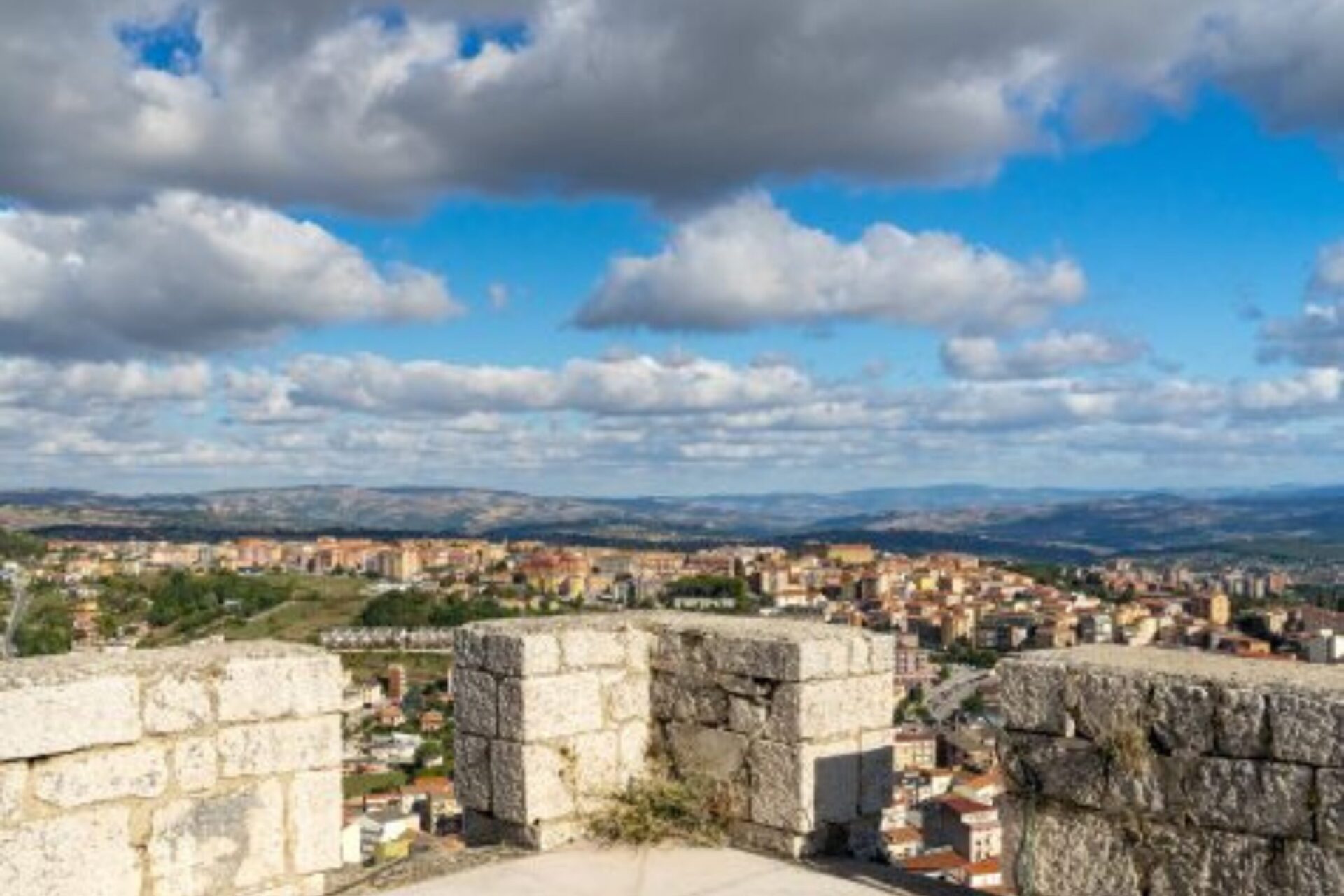
The main tower drew me in. It offers the best view over the city, and if you look closely, you’ll spot tool marks left by long-gone craftsmen.
Inside, wooden beams and vaulted ceilings show off impressive engineering. Now, the castle displays medieval clothing and artifacts, which help you picture daily life here centuries ago.
Exploring the Alleyways and Surroundings
The winding cobblestone alleys below the castle are a maze of surprises. I spent ages just wandering, stumbling on stone houses with balconies overflowing with flowers.
Local families have called this medieval village home for generations. One elderly woman even invited me in for coffee and told stories about her family’s two centuries in the same house.
Around here, you’ll find:
- Tiny chapels with faded frescoes
- Hidden courtyards
- Trattorias serving Molise’s specialties
- Artisan shops keeping old crafts alive

For the best effect, visit at sunset. The golden light makes the stone buildings glow. From just below the castle, you can look down at the newer city stretching into the valley—a striking mix of old and new Italy.
Chasing the Golden Hour: Experiencing Sunset Views
Golden hour sweeps over Campobasso and turns it into something magical. The castle and town get soaked in breathtaking golden light, and honestly, photographers go wild for it.
Best Vantage Points for Sunset
The castle, perched highest over Campobasso, is hands-down the best place to watch the sunset. I always head for the western ramparts for an open view of the sun dropping behind the Apennines.
If you want something quieter, try the panoramic terrace near Monforte Castle. It’s less crowded and offers sweeping views of both the castle and the old town, all drenched in gold.
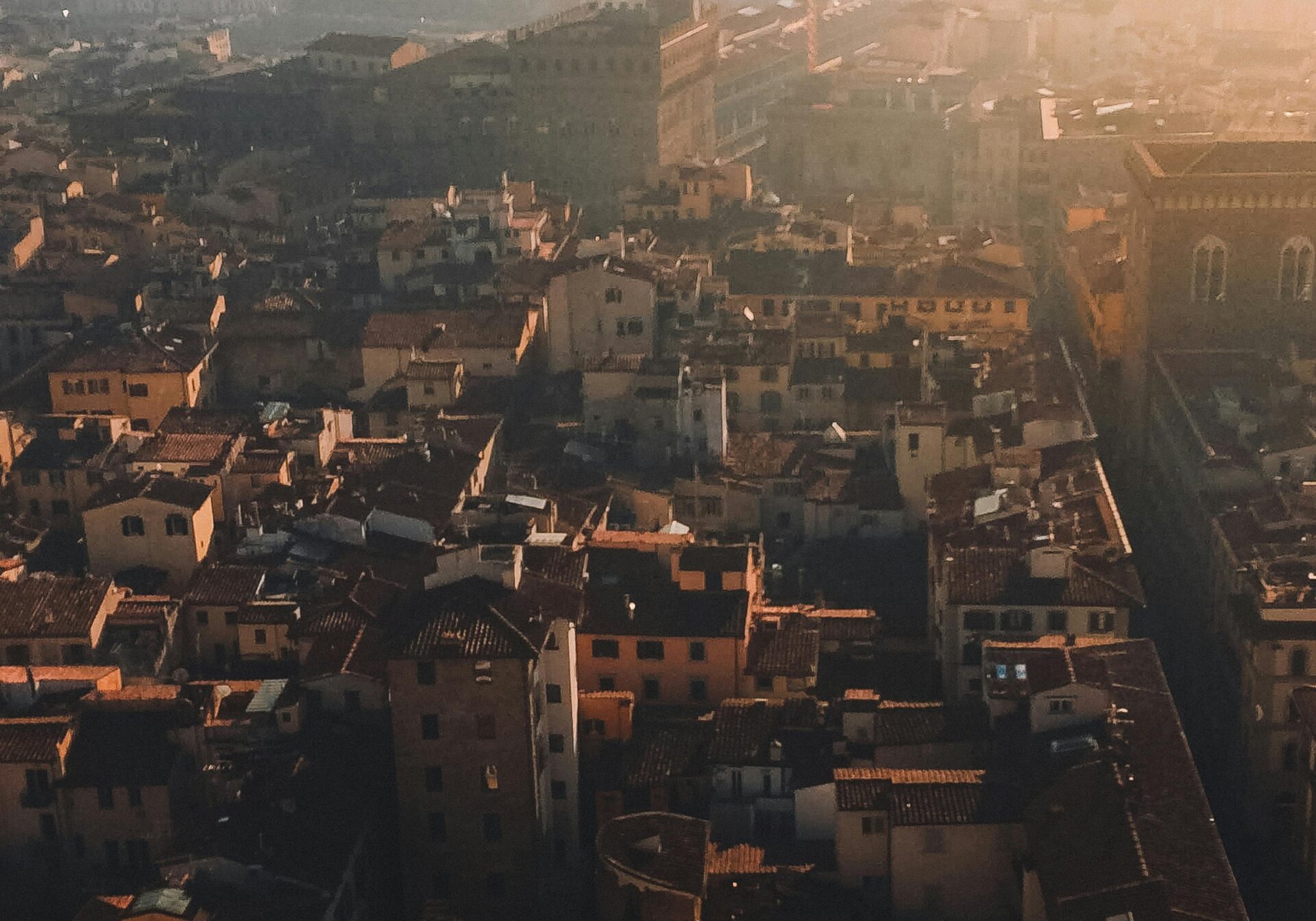
Another favorite of mine is the path along Via Mazzini. As you walk up toward the castle, you’ll find little spots to pause and watch the light play across terracotta roofs.
Villa de Capoa’s public garden is also a peaceful pick, with sunset views framed by ancient trees and fancy shrubs.
Color Composition and Evening Hues
During golden hour, Campobasso’s colors shift in a big way. Beige and gray stones warm up with a rich amber glow, and the sky turns a deeper blue.
I always notice a three-layer effect: the golden-lit castle and upper town, a middle layer in partial shadow, and then the valley below fading into night.

The richest colors show up about 20-30 minutes before sunset. That’s when the castle’s stone walls reflect a coppery light against the orange and purple sky.
On clear evenings, you can spot the “alpenglow”—the last sun rays paint the eastern mountains pink, while the west burns with orange and red.
Capturing Panoramic and 360° Images
The castle’s height makes it a dream for panoramic shots. I like to set up my tripod at the northeastern corner and try to fit the whole town and new city into one image.
For a full 360°, I stand in the castle’s central courtyard and slowly spin, snapping shots to stitch together later. That way, you get the walls, city, and mountains all in one sweep.

If you’re using a phone, panorama or wide-angle modes work, but I’d suggest taking several shots at different exposures. The contrast between bright sky and shadowy streets can be tricky.
I usually underexpose my shots a bit during golden hour. It helps keep the colors rich and the details sharp, even in the shadows.
Visual Storytelling: Photography and Art Above the City
Snapping Campobasso’s golden sunset from the castle opens up endless creative options. The view turns everyday scenes into stunning compositions and magical stories, whether you’re a pro or just dabbling.
Popular Image Orientations: Portrait, Square, and Panorama
Different photo orientations really change the mood. I often use portrait mode to capture the soaring church spires and the way buildings tumble down the hillside.
Square shots are my go-to for social media. They let me frame the castle walls and city below in a neat, balanced way. Plus, the contrast between ancient stone and modern buildings in sunset light just pops.
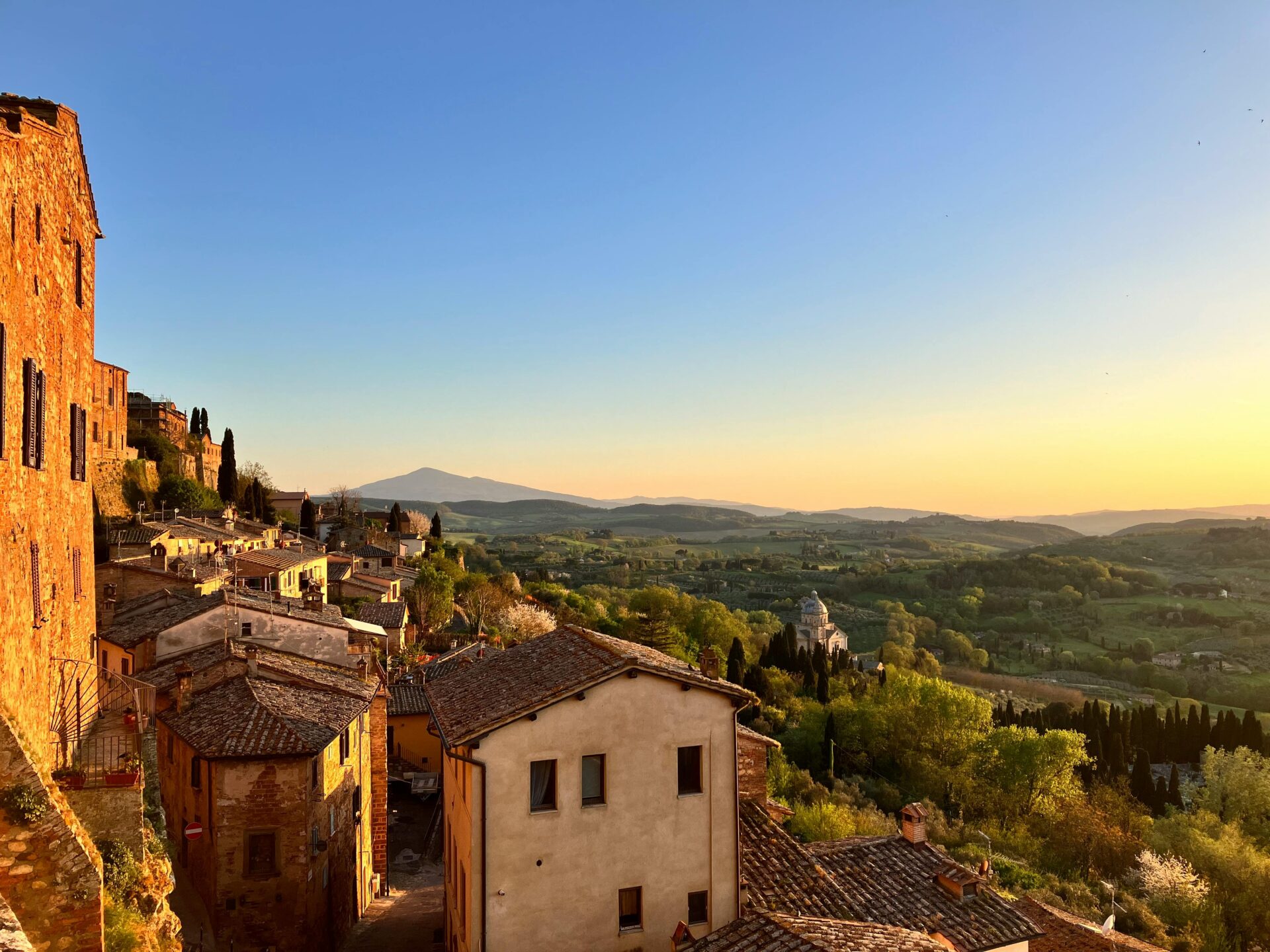
For those breathtaking shots, I always switch to panorama. That wide format lets me grab the whole landscape—from distant mountains to the city’s edge. The best ones catch both the sunset colors and the city’s first twinkling lights.
Creating Postcards and Vectors from Your Photos
Some of my sunset photos have ended up as custom postcards. Friends seem to love them. I just use an online printer and turn high-res shots into souvenirs that show off Campobasso’s golden hour.
I’ve also tried turning photos into vector art. It strips out the clutter and turns the city into bold shapes and blocks of color—great for prints or digital wallpapers.
If you want good vectors, pick photos with strong contrast between the sky and city outline. I always keep images at 300 dpi for prints, so the details stay crisp.
Video Highlights and Editorial Content
Time-lapse videos capture the city’s shift from afternoon to evening in a way photos just can’t. I set up my tripod at the castle and record 2-3 minute clips of the sun sinking and city lights flickering on.
Some of my videos have even caught the eye of travel blogs and local tourism sites. I like pairing the footage with a bit of background about the region’s history and culture to make quick mini-documentaries.
For the best results, I get there at least an hour before sunset to stake out a spot and catch the whole color change. Soft background music and light narration help viewers soak up the vibe without too many distractions.
Stock Resources and Safe Search Tips for Image Seekers
Finding the perfect Campobasso sunset photo takes a bit of know-how. I’ve pulled together some favorite resources and tips to help you get stunning visuals without running into copyright headaches.
Royalty-Free and Editorial Stock Photos
I usually start my search for castle-at-sunset shots on trusted stock photo sites. Shutterstock, Adobe Stock, and Unsplash have loads of royalty-free and editorial images. “Royalty-free” just means you pay once and can use the image again and again.
If I’m after more journalistic or event-specific photos, Getty Images or Alamy deliver. They’ve got authentic, newsy shots that feel less staged.
Always double-check the license. Some royalty-free images still have limits on commercial use or need attribution. I’ve found buying image packs instead of singles saves money if you need a lot.
Safe Search Filters and Family-Friendly Content
I always turn on safe search filters when I’m looking up travel photos, especially in public or shared spaces. Most big search engines and stock sites let you filter out questionable stuff in their settings.
Google Images has a SafeSearch button, and Bing and DuckDuckGo have their own versions, though they work a bit differently.
For family blogs or school projects about Campobasso, I stick to sites labeled as family-friendly. Pixabay and Pexels are great for free stock photos and keep their content clean.
Safe search isn’t just about blocking the bad stuff—it also helps weed out unrelated results, making it easier to find those perfect golden castle shots.
The Rise of AI Generated Content in Imaging
Lately, I’ve played around with AI image generators to get fresh takes on Campobasso’s castle at sunset. Tools like DALL-E, Midjourney, and Stable Diffusion can whip up unique images from just a text prompt.
They’re handy when you can’t find the angle or lighting you want in stock libraries. I just type in something like “Campobasso castle glowing golden at sunset from above” and see what pops out.
But I’m cautious with rights. AI-generated art is a legal gray area, and some platforms keep the rights to what you create.
For professional work, I still lean toward real photography. But for concept art or filler images, AI tools can fill gaps when stock photos don’t quite capture Campobasso’s magic.
Campobasso’s Connection to Surrounding Regions and Nature
Campobasso acts as a gateway to some of Italy’s wildest, least-touched landscapes. From this hilltop city, roads and trails fan out through hills, mountains, and all the way to the Adriatic Sea.
Molise: The Heartland Around Campobasso
Molise is tiny—Italy’s second smallest region—but it’s packed with authenticity. Campobasso stands as its capital, and honestly, most tourists skip right past this hidden gem.
Out in the countryside, winding roads link up villages like Sepino (with its Roman ruins) and Castelpetroso (with its dramatic sanctuary). Farms dot the hills, turning out truffles, olive oil, and a local red wine called Tintilia. I’ve tasted it in more than a few trattorias.
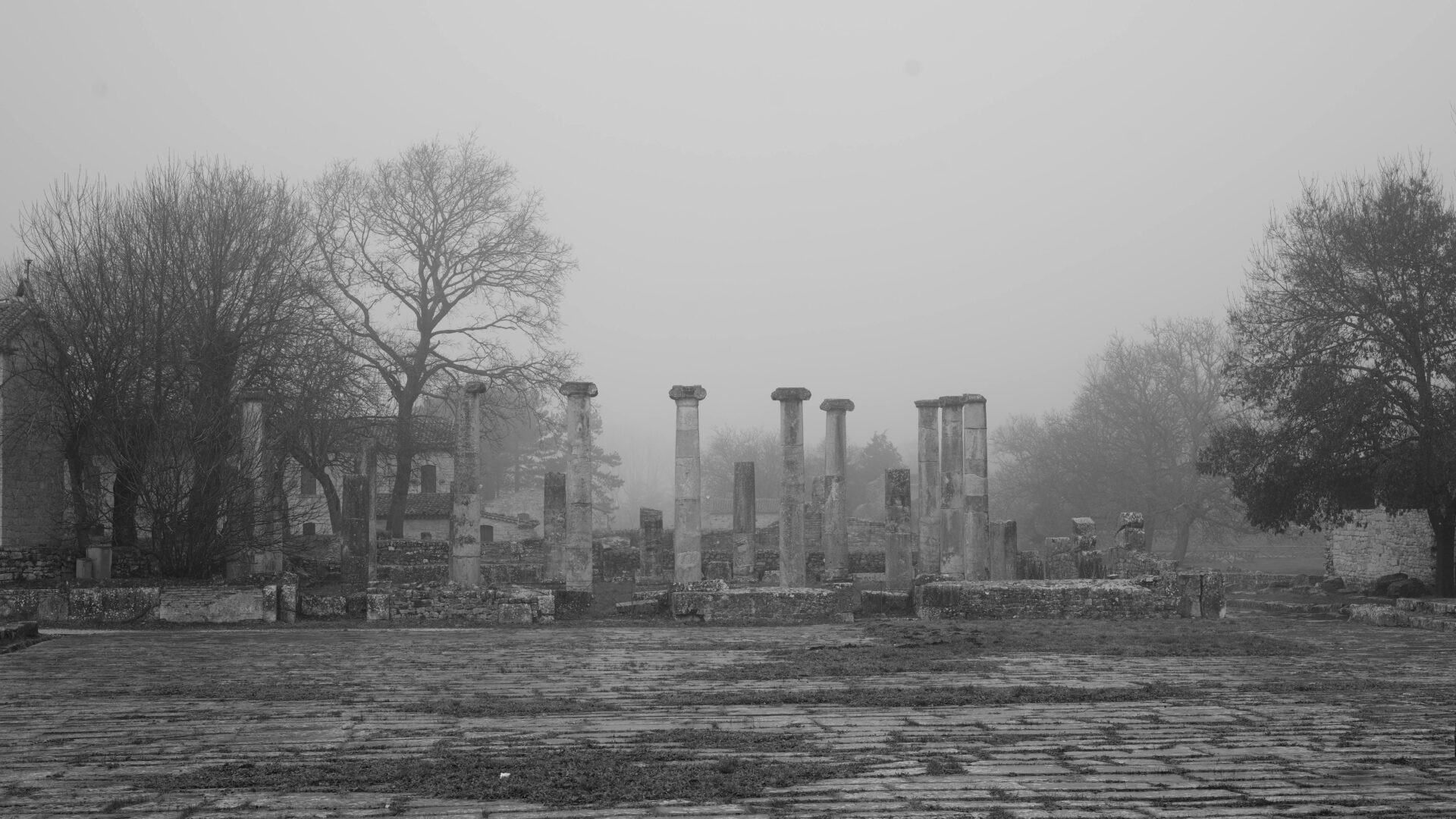
The rural setting is a dream for hikers. Forest trails feel untouched, and I’ve spotted wildlife that seems totally unbothered by humans. Traditions run deep here, with seasonal festivals that celebrate harvests and customs stretching back centuries.
Neighboring Lazio, Abruzzo, and Campania
Campobasso’s location makes day trips to other regions easy. I’ve driven west to Lazio—Rome’s region—in just over two hours on scenic mountain roads.
Head north and you hit Abruzzo, famous for its rugged mountains and fortified medieval towns. The drive through Castel di Sangro is stunning, especially as the seasons shift. In winter, ski resorts like Roccaraso are just a short hop away.
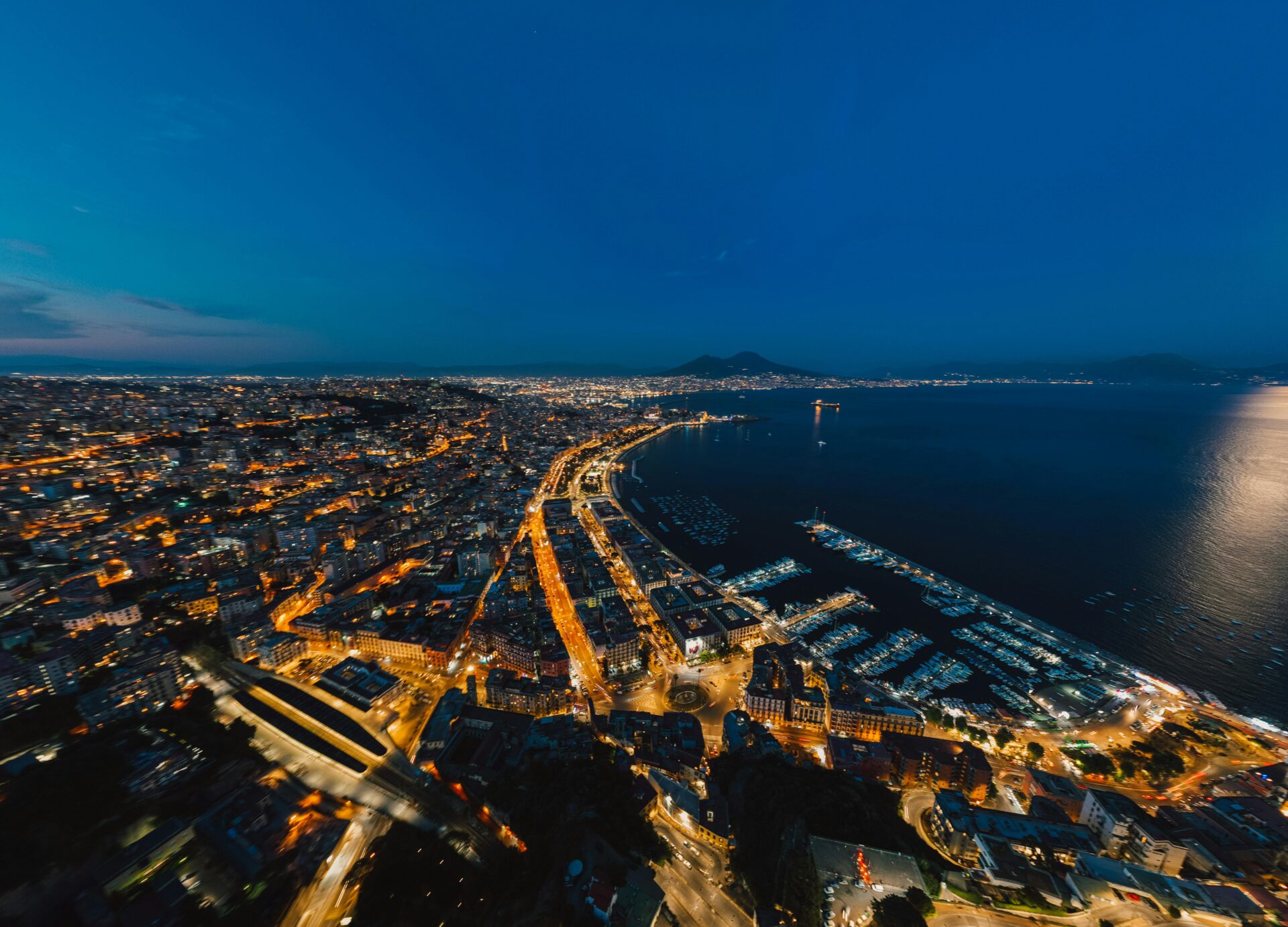
Go south and you reach Campania, home to Naples and a totally different vibe. The transition from Molise’s quiet hills to Campania’s energy happens gradually, following valleys and rivers that have linked these regions for ages.
Exploring National Parks, Valleys, and Nearby Beaches
The natural variety around Campobasso honestly surprises me every time. Within an hour, I can be in Abruzzo National Park—one of Italy’s oldest—where bears and wolves still roam the old beech forests.
The Biferno River and others carve out valleys that make natural routes through the hills. I’ve followed these to waterfalls and swimming holes that are perfect for summer.

And the beaches? They’re closer than you’d think. In under an hour, I can reach the Adriatic at Termoli, where golden sand and clear water feel worlds away from the mountains. The coastal road passes fishing villages and seafood spots where the day’s catch comes straight from the boats.
For nature fans, the interlinked hiking trails between mountain villages offer multi-day adventures with fresh views around every bend.

